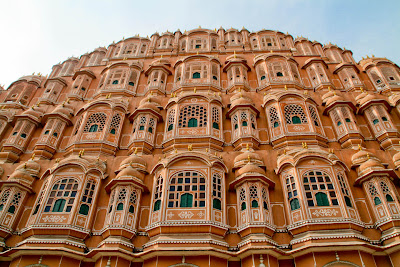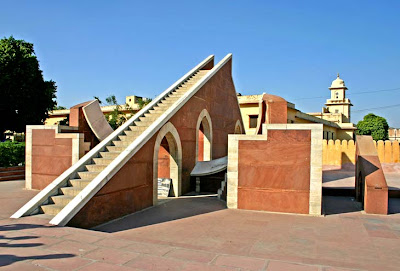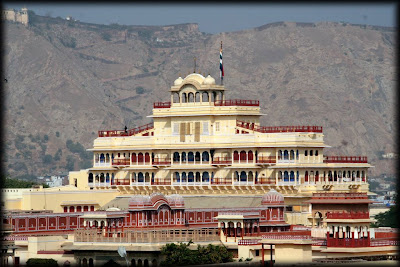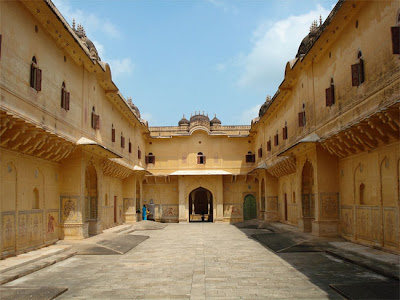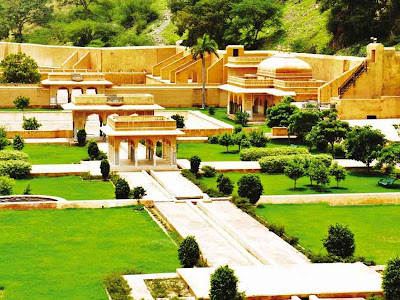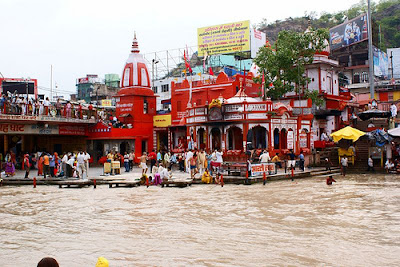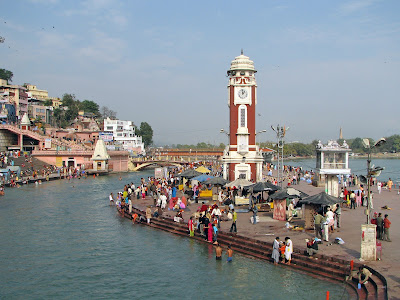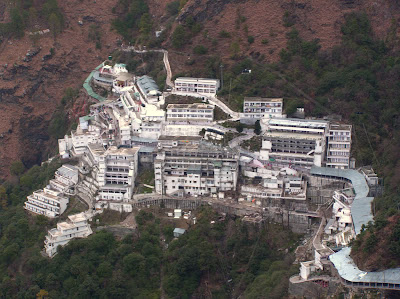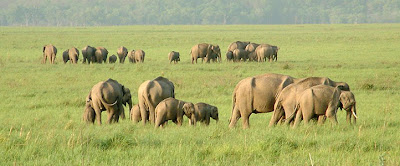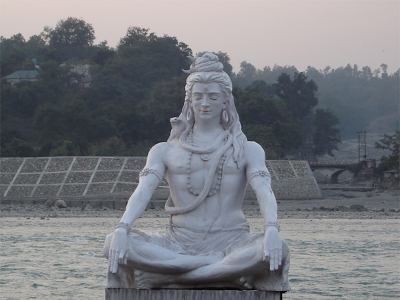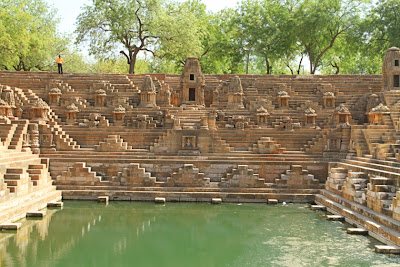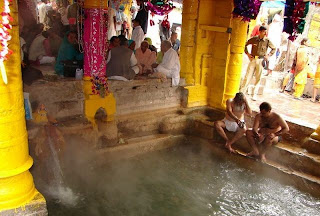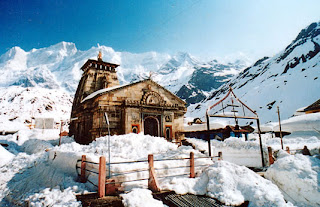Manali Local Sightseeing
 MANU TEMPLE: 3 kms. from the main bazar in old Manali lies the temple of MANU RISHI. It is believed that this is the only temple of Manu in India, who was the creator of human race on the earth. The charming location of Manu Temple, on the bank side of river Beas, adds to its attraction. The temple was rebuilt in the year 1992, when the vaulted ceiling and marble floors were added.
MANU TEMPLE: 3 kms. from the main bazar in old Manali lies the temple of MANU RISHI. It is believed that this is the only temple of Manu in India, who was the creator of human race on the earth. The charming location of Manu Temple, on the bank side of river Beas, adds to its attraction. The temple was rebuilt in the year 1992, when the vaulted ceiling and marble floors were added. TIBETAN MONASTERIES: There are 3 newly constructed colorful monasteries, where visitors can buy carpets and other Tibetan handicrafts. Two are located in the town and one at Aleo on the left bank of Beas river.
TIBETAN MONASTERIES: There are 3 newly constructed colorful monasteries, where visitors can buy carpets and other Tibetan handicrafts. Two are located in the town and one at Aleo on the left bank of Beas river. MOUNTAINEERING INSTITUTE: Located 3 kms. on the left bank of river Beas towards Kulu. This Institute organises basic & advance training courses, in trekking, mountaineering, skiing and water sports. Skiing and trekking equipments can be hired from here by booking in advance. Tourists can visit an interesting showroom here.
MOUNTAINEERING INSTITUTE: Located 3 kms. on the left bank of river Beas towards Kulu. This Institute organises basic & advance training courses, in trekking, mountaineering, skiing and water sports. Skiing and trekking equipments can be hired from here by booking in advance. Tourists can visit an interesting showroom here. VASHIST HOT WATER SPRINGS AND TEMPLE: (3 kms) Vashist, a small village located on the left bank of river Beas towards Rohtang pass is worth a visit. It is renowned for its hot springs and temples. Nearby is the pyramidal stone temple dedicated to Vashist Muni. There is another Temple of Lord Ram here. Natural hot sulphur springs with two separate bathing tanks for gents and ladies are always full of tourists. Turkish style showers fitted baths have also been built nearby. Hot water from the nearby spring is provided for bathing.
VASHIST HOT WATER SPRINGS AND TEMPLE: (3 kms) Vashist, a small village located on the left bank of river Beas towards Rohtang pass is worth a visit. It is renowned for its hot springs and temples. Nearby is the pyramidal stone temple dedicated to Vashist Muni. There is another Temple of Lord Ram here. Natural hot sulphur springs with two separate bathing tanks for gents and ladies are always full of tourists. Turkish style showers fitted baths have also been built nearby. Hot water from the nearby spring is provided for bathing. NEHRU KUND: 5 kms. on National Highway to Leh,a natural spring of cold clear water named after Pt. Jwahar Lal Nehru, who used to drink water from this spring during his stay in Manali. This spring is believed to originate from the Bhrigu lake situated high-up in the mountains.
NEHRU KUND: 5 kms. on National Highway to Leh,a natural spring of cold clear water named after Pt. Jwahar Lal Nehru, who used to drink water from this spring during his stay in Manali. This spring is believed to originate from the Bhrigu lake situated high-up in the mountains. SOLANG VALLEY: 13 kms. is a splendid valley between Solang village and Beas Kund. Solang valley offers the view of glaciers and snow capped mountains and peaks. It has fine ski slopes. The Mountaineering Institute has installed a ski lift for training purpose. Located here is a hut and guest house of the Mountaineering and Allied sports Institute, Manali. Now a few hotels have also come up. The winter skiing festival is organised here. Training in skiing is imparted at this place.
SOLANG VALLEY: 13 kms. is a splendid valley between Solang village and Beas Kund. Solang valley offers the view of glaciers and snow capped mountains and peaks. It has fine ski slopes. The Mountaineering Institute has installed a ski lift for training purpose. Located here is a hut and guest house of the Mountaineering and Allied sports Institute, Manali. Now a few hotels have also come up. The winter skiing festival is organised here. Training in skiing is imparted at this place. KOTHI: Situated on the road to Rohtang pass, a picturesque spot, Kothi is 12kms. from Manali. A PWD rest house is situated on a ridge overlooking a narrow valley with a very good view of mountains and valleys. Large number of films (movies) have been picturised at this place and is the ideal resting resorts of poets, writers and the lovers of peaceful environs.
KOTHI: Situated on the road to Rohtang pass, a picturesque spot, Kothi is 12kms. from Manali. A PWD rest house is situated on a ridge overlooking a narrow valley with a very good view of mountains and valleys. Large number of films (movies) have been picturised at this place and is the ideal resting resorts of poets, writers and the lovers of peaceful environs. RAHALA WATER FALLS: 16 kms. on way to Rohtang pass. If one goes to Marhi on foot from Kothi from the old road, the sight of the falls is fascinating. It is a good picnic spot as well.
RAHALA WATER FALLS: 16 kms. on way to Rohtang pass. If one goes to Marhi on foot from Kothi from the old road, the sight of the falls is fascinating. It is a good picnic spot as well. ROHTANG PASS (3979 m): Rohtang pass is 51kms. from Manali on highway to Keylong/Leh. It offers a panorama and spectacular mountain view. The pass is open from June to October each year although trekkers can cross it earlier. It is a gateway to Lahaul Spiti, Pangi and Leh valley just as Zojila pass is a gatway to Ladakh. There are a beautiful sight of glaciers, peaks and Chandra river flows down in the Lahaul valley. Slightly to the left are the twin peaks of the Geypan.
ROHTANG PASS (3979 m): Rohtang pass is 51kms. from Manali on highway to Keylong/Leh. It offers a panorama and spectacular mountain view. The pass is open from June to October each year although trekkers can cross it earlier. It is a gateway to Lahaul Spiti, Pangi and Leh valley just as Zojila pass is a gatway to Ladakh. There are a beautiful sight of glaciers, peaks and Chandra river flows down in the Lahaul valley. Slightly to the left are the twin peaks of the Geypan.
JAGATSUKH: 6 kms. from Manali located on the left bank on Beas on the road to Naggar. The place is famous for very old temples of Lord Shiva and Sandhya Gayatri in Shikhara style, these are worth a visit.
ARJUN GUFA(CAVE): 4kms. from Manali towards Naggar, the cave is
situated near Prini village 1km. above the road where Arjun had
meditated.














